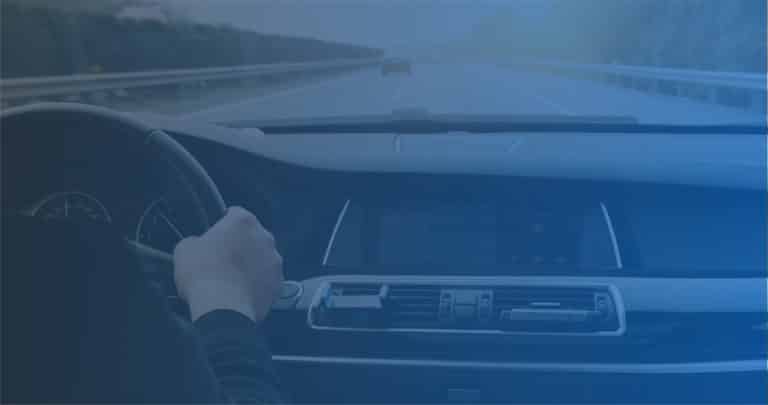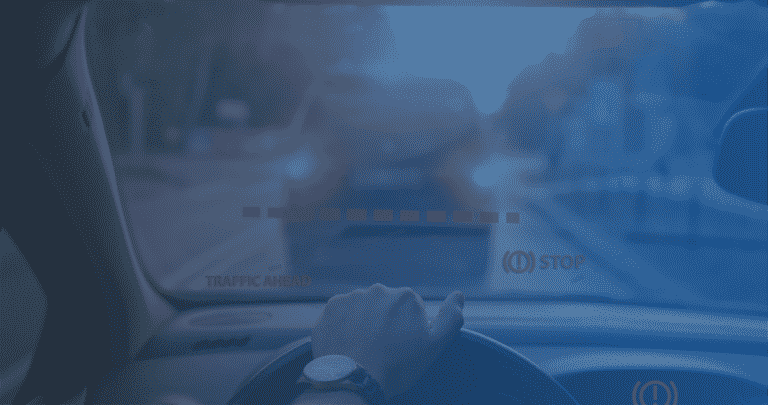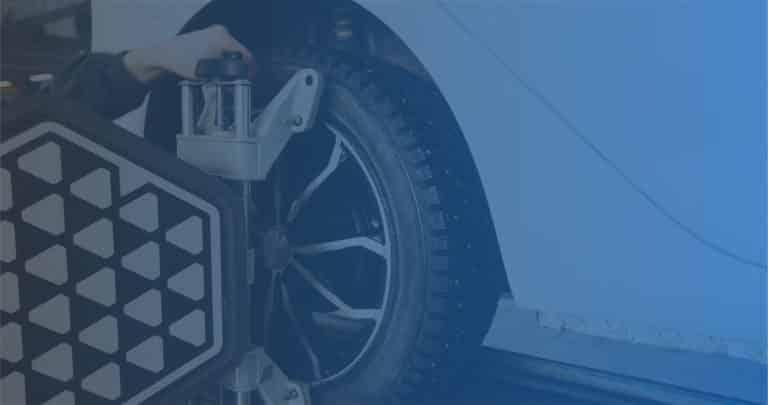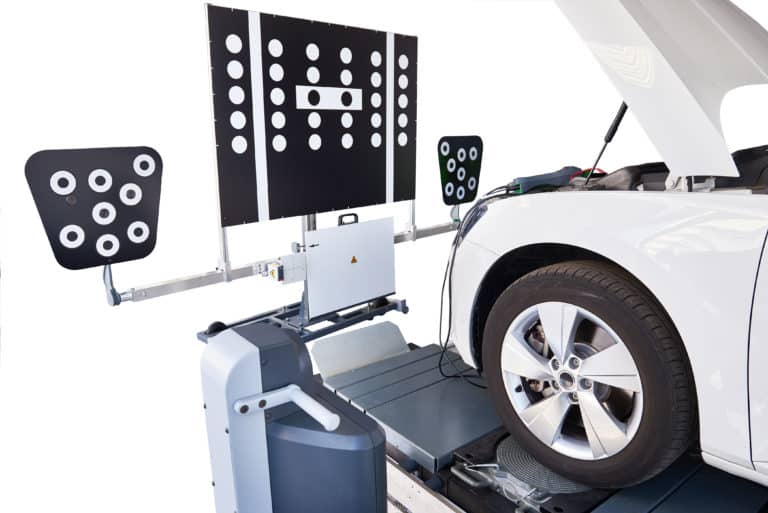As car technology advances, so do the safety features available in new models. One such ADAS (Advanced Driver Assistance System) is lane change assist. This feature helps drivers safely make lane changes and can be a real lifesaver when busy roads make it difficult to keep track of approaching vehicles in adjacent lanes.
Lane change assist systems in cars have the potential to make highways a dramatically safer place to travel in today’s distracted world. Understanding lane change assistance as a driver can help you identify it on unfamiliar vehicles and utilize it appropriately. It is also critical to understand lane change assistance as a shopper, so you recognize this safety feature next time you shop for a vehicle.
In this article, we will explain what lane change assist is, how it works, and how it relates to other ADAS systems.
What is Lane Change Assist?
If you’ve been looking into ADAS systems, you may have wondered, “what is Lane Change Assistant?” Lane Change Assist (LCA) is a technology that aids drivers in changing lanes safely. It utilizes sensors to detect and warn motorists about approaching cars in adjacent lanes. Lane Change Assist can help warn of vehicles approaching your blind spots, which can prevent lane change accidents on the road. When LCA senses that you are going to change lanes in a way that might be dangerous, it will provide an audible and/or visual warning to help you make a safe lane change.
There are two main types of Lane Change Assistant systems: one that still leaves the driver in control of steering and braking, and one called Active Lane Change Assist, where the car is already automating steering and speed, and following distance and then the driver indicates a lane change and the vehicle uses sensors to change lanes on its own.
The first is the oldest and is simply a warning system. When drivers signal for a lane change on multi lane highways and roads, it checks blind spots on the corresponding side and to vehicle’s rear to look for existing or approaching risks. If its unsafe to change into the lane, the Lane Change Assistant system will provide an audible or visual warning to the driver.
With these ADAS systems, you must turn on the indicator for LCA to activate in your car. There is no warning if you do not. Once you do so, the alert can:
- Be heard as a ding
- Seen as a light on the dashboard
- Even felt as a steering wheel vibration
It’s rarer, but some Lane Change Assistant systems provide active steering support. For example, Audi offers Side Assist with Lane Change Assistant. If lane change assist is active and a lane change is initiated, e.g., by turning on the indicator switch while driving straight ahead, an acoustic tone sounds that gets louder as the car gets closer to the other vehicle. The lane change assistant then takes control of steering wheel so the driver does not have to steer.
The second main group of LCA systems is active lane change assist — a more sophisticated invention. This type of lane change assist only works when the car has two other ADAS systems activated so that it is in a level 2 automation. A vehicle is considered capable of level 2 (out of 0-6), when a vehicle provides steering (lane centering or sustained LKA) and brake/acceleration support (adaptive cruise control) at the same time.
Source: SAE.org
When ACC and LKA/lane centering, are both activated on highways, the vehicle is proactively controlling both forward (gas and brakes) and lateral (steering) movement. With these systems activated, a driver can use active lane change assist to switch lanes without taking control over the vehicle’s speed and steering systems. Meaning — active lane change assist uses sensors to both check that a lane change is safe and to actually adjust the steering and speed to actively complete the lane change maneuver without driver input (besides signaling).
How Lane Change Assist Works
All ADAS are characterized by their use of advanced sensors to provide safety warnings and actions. In particular, lane change assist uses rear radar sensors located in the back corners of the vehicle.

The lane change assistant system is made up of two control units with identical structures, one master and one slave. The two control units, when coupled with an integrated radar sensor, form a single standalone component. Above the radar sensor, a plastic cover is mounted on the control unit. This radome is composed of a special material that allows radar beams to pass through unimpeded.
To inform LCA systems, millimeter-wave radars emit high-frequency electromagnetic waves that bounce off objects and return to the sensor. The time it takes for this signal to travel is used in conjunction with its location, size, speed, distance traveled, and direction of movement to determine how far away an object is.
On and Off Switch
In some cars, there is a button that may be used to turn the lane change assistant function on and off. The button has an LED light that illuminates when the function is on. When restarted, the system keeps track of the previous status and uses it again.
Lane Change Assistant Functionality
Each lane change assist system will work a little bit differently. However, for the most part, they function like this:
If there is a vehicle in the monitored area and if a lane change is not taking place, the driver is informed by the LED displays in the right and left outside mirrors lighting up a little. Because the light intensity is lower, the driver is not continuously distracted. Additionally, the warning lamp in the outside mirror of the same side flashes brightly when the driver actuates the direction indicator lever to change lanes.
If a vehicle is in the monitored area and no lane changes are being made, the LED displays in the right and left outside mirrors faintly light up. The luminous intensity is decreased to minimize any distractions for the driver. If the driver signals that he or she wants to change lanes by moving the direction indicator knob, he or she will be warned via the warning lamp in the corresponding side mirror flashing more intensively.
Related ADAS Features
There are other ADAS features that work in conjunction with lane change assist. These features can keep you safe on the road and help avoid accidents. Some of these features include:
Blind Spot Monitoring
Blind-spot monitoring involves sensors on the outside of the vehicle that keep an eye on your blind spot. When these sensors detect a car in your blind spot where you can’t see it in your mirrors, a little light will come on to notify you. These lights are usually inside of the front doors near the mirrors or on the mirrors themselves.
If you use your turn signal while there’s a car in your blind spot, this function will sound an alarm. The vehicle will beep to notify you that it isn’t a good time to move lanes because of the danger of an accident.
Because blind spot monitoring and rear cross traffic alert both use the same sensors that LCA uses, these features are often bundled together by automakers as a rear crash prevention package.
Adaptive cruise control (ACC)
Adaptive cruise control automatically regulates a car’s speed and braking. This ADAS feature uses information from other automobiles and objects on the road to provide a safe and pleasant driving experience. The lane change assist will automatically activate adaptive cruise control if it detects a car is in your path.
Examples of Lane Change Assist
Though it hasn’t caught on the way automatic emergency braking has, lane change assist is becoming more common on new cars. Some of the most popular car brands that offer lane change assist systems or similar are:
- Cadillac Super Cruise System
- BMW Driver Assistance
- Audi Side Assist
- Porsche Lane Change Assist
- Subaru Rear Vehicle Detection
- Mercedes Active Lane Change Assist
LCA & ADAS Calibration
For LCA and any other ADAS systems, it’s important to ensure that vehicles are professionally calibrated after several common occurrences like fender benders and nearby repairs. For example, LCA systems need to be recalibrated following:
- Rear body work
- Bumper position change
- Removal, replacement, or repair of sensors
A diagnostic software tool, which initiates the calibration procedure, a Doppler generator, and a calibration panel are all required to calibrate the rear radar system. This testing equipment is placed behind the car according to vehicle manufacturer instructions. This isn’t something that consumers can do on their own. ADAS know-how, equipment, and properly-controlled indoor floor space all require an investment. However, that isn’t practical for consumers or for many auto shops.
Own a Calibration Center
ADAS calibrations are the present and future of the automotive service industry. And calibration centers are the answer to the growing need for professional, controlled ADAS calibrations. Our team of experts is ready to partner with you from start to finish. We take care of all the details for a seamless experience. Learn more about owning an ADAS calibration center today.
Key Take-aways
- Car technology is advancing, leading to the introduction of safety features like Lane Change Assist (LCA).
- LCA uses sensors to detect and warn drivers about nearby vehicles in adjacent lanes, reducing lane change accidents.
- There are two main types of Lane Change Assist systems: warning-based and Active Lane Change Assist.
- To activate LCA, drivers need to use their turn signals, and it provides warnings through various alerts.
- Active Lane Change Assist works in conjunction with other ADAS systems to automate lane changes without driver intervention.
- Lane Change Assist relies on rear radar sensors positioned in the vehicle’s corners.
- Professional calibration of LCA and other ADAS systems is crucial after specific events like collisions or sensor repairs.
- Additional ADAS features like Blind Spot Monitoring and Adaptive Cruise Control (ACC) complement LCA for enhanced safety.
- Many popular car brands offer LCA systems, including Cadillac, BMW, Audi, Porsche, Subaru, and Mercedes.
- Owning an ADAS calibration center is essential for ensuring accurate calibration of LCA and other ADAS features.
FAQ
What is Lane Change Assist (LCA)?
Lane Change Assist (LCA) is an Advanced Driver Assistance System (ADAS) technology that helps drivers safely change lanes. It uses sensors to detect nearby vehicles in adjacent lanes and provides warnings to prevent lane change accidents.
How does Lane Change Assist work?
LCA relies on rear radar sensors located in the back corners of the vehicle. These sensors emit high-frequency electromagnetic waves, which bounce off objects and return to the sensor. LCA uses this data to determine the location, size, speed, and direction of nearby objects, helping drivers make safe lane changes.
Are there different types of Lane Change Assist systems?
Yes, there are two main types of LCA systems. One type provides warnings to the driver, and the other, known as Active Lane Change Assist, automates steering and speed control during lane changes.
How does Active Lane Change Assist work?
Active Lane Change Assist works in conjunction with other ADAS systems and automates lane changes without driver intervention. It requires the activation of other systems like Adaptive Cruise Control (ACC) and Lane Keeping Assist (LKA) for level 2 automation.
Do I need to activate Lane Change Assist in my car?
Yes, you need to activate LCA by using your turn signals. It won’t provide warnings or assist with lane changes unless you indicate your intention to change lanes.







